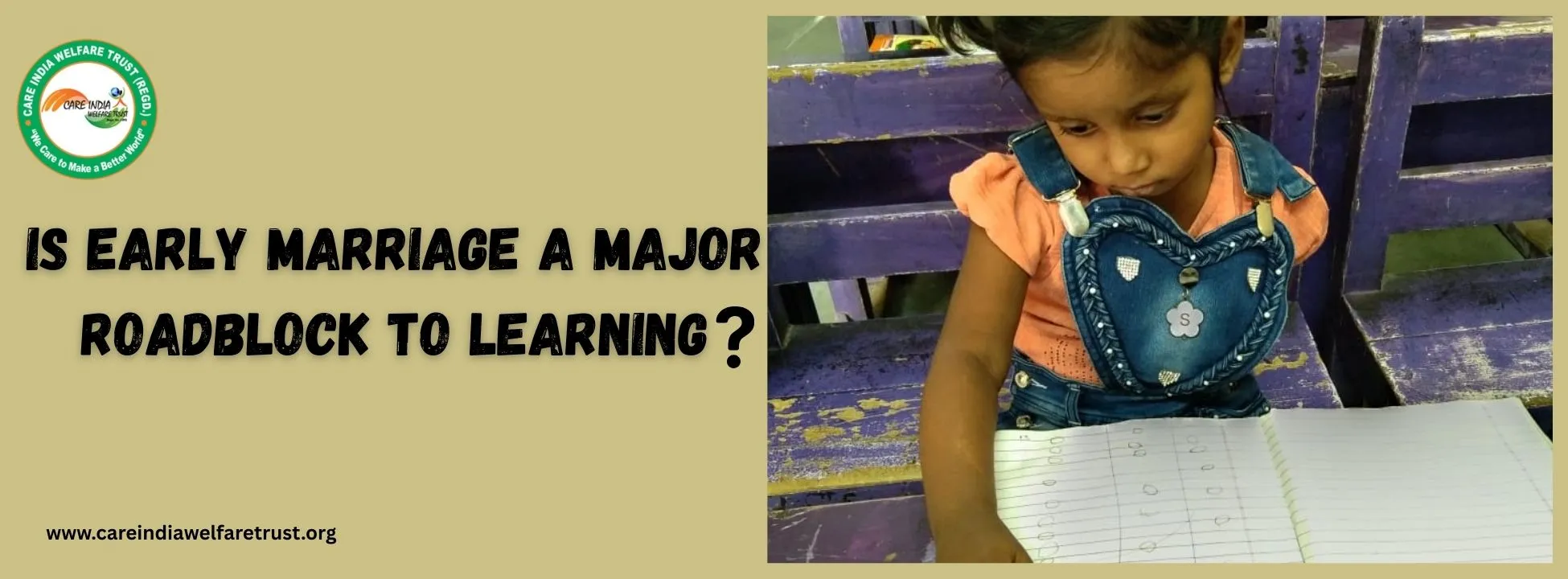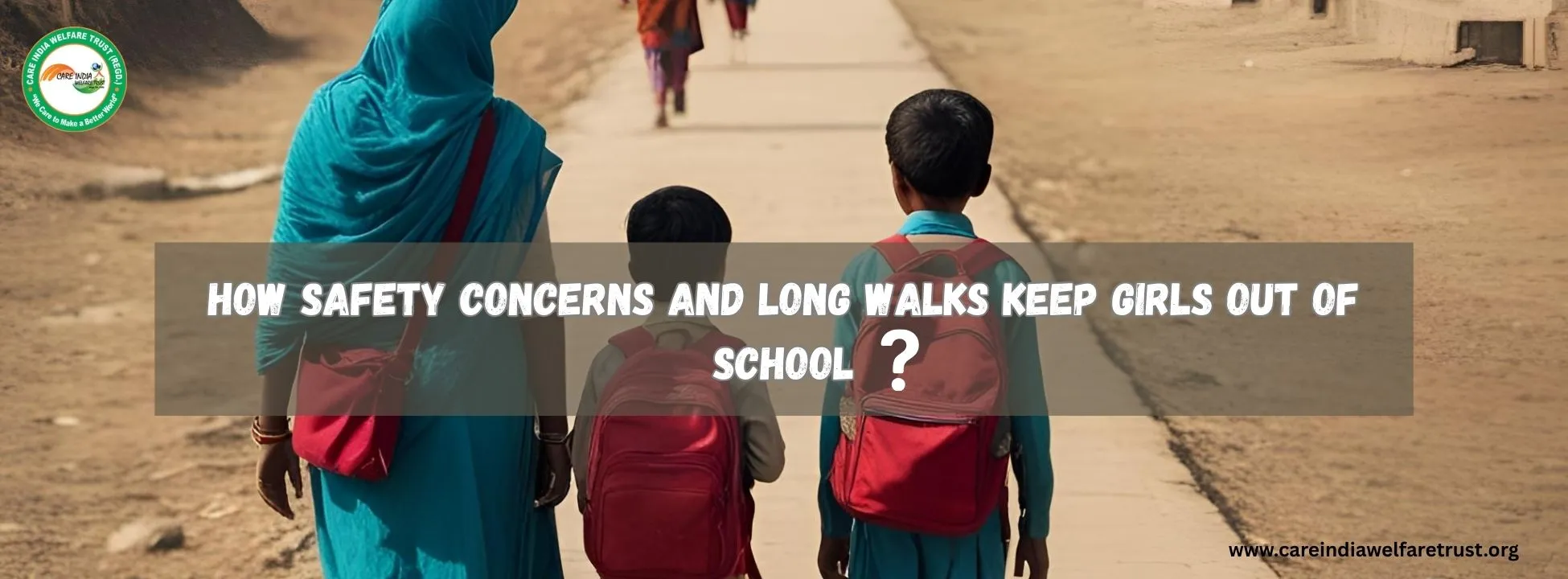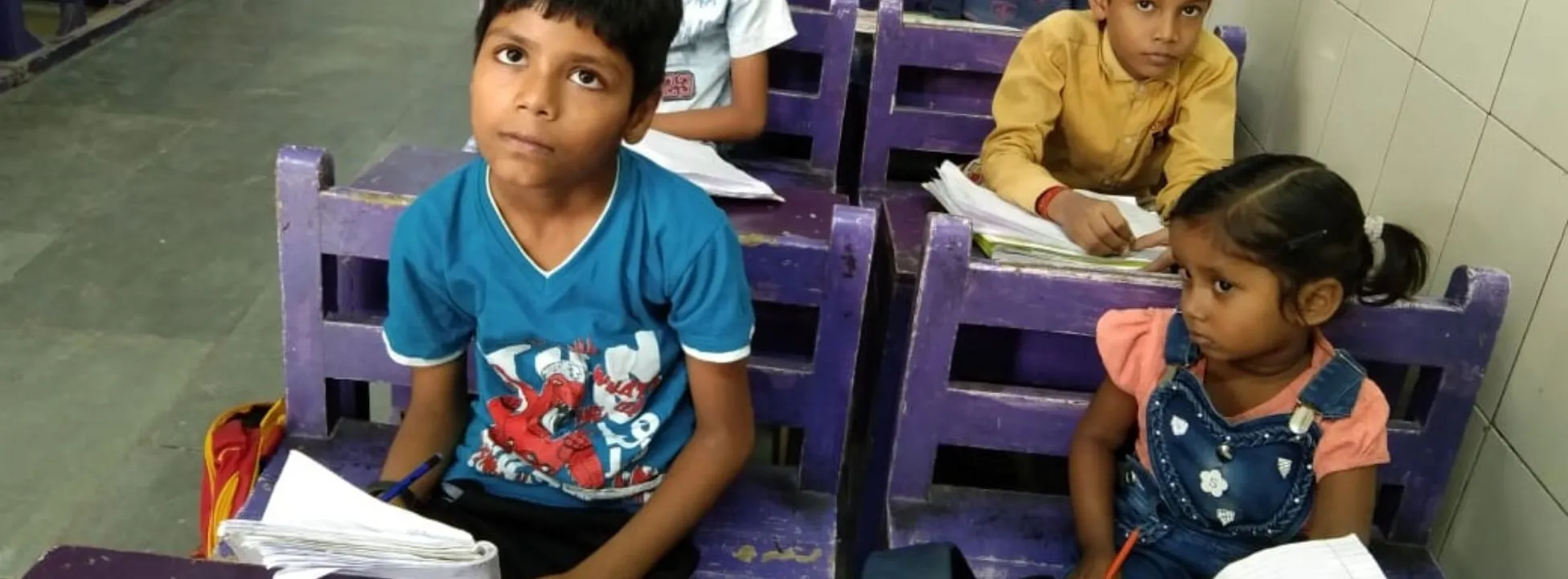The thousands of girls around the world who are unable to access education due to social conditions. Those barriers arise from economic problems, cultural values, and societal norms. Those gender places a priority on the education of boys and, in many instances, put restrictions on girls to attend school. This is because it is thought that women must perform household work. Early marriages occur in various regions around the world, causing girls to leave school and focus on household tasks.
Such a situation denies them the opportunity to pursue personal growth and educational advancement. Inequalities in educational opportunities constitute a double disappointment, for they deny women their personal development and cultivate a cycle of poverty and dependence. It becomes increasingly harder for these women to stand up for their rights and actively participate in their communities.
This is also supported by the cultural norms that would place a higher expense on boys' schooling than girls', decreasing the probability that the girl child will get whatever help she deserves to excel academically. Protection issues constitute a major hindrance for most parents bringing their daughters to school, especially the long and unsafe walk.
A huge number of girls miss school during their menstrual periods due to a lack of proper sanitary facilities, a situation made worse by inadequate hygienic facilities in schools. Cooking and sibling care are typical family duties that usually do not allow girls enough time for school.
Poverty is considered an impediment, since many families cannot educate their boys while they cannot pay the hidden fees of education, including books, uniforms, and transportation. Due to this spillover, girls are cruelly denied an essential right to education, which limits their abilities and, consequently, the possibilities for entire communities.
These social barriers should be addressed and removed to empower all women fully and realise their potential, such that every girl will be on equal footing to learn and earn. Poverty is one of the 7 social challenges hindering girls' access to education in India, and overcoming it is crucial to achieving gender equality in education.
1. Deep-Rooted Gender Stereotypes Still Hold Girls Back
In many parts of the world, there exist deep-rooted gender stereotypes barring girls from opportunities, particularly education. In traditional societies characterized by stereotypical beliefs, girls were conditioned to assume roles wherein their activities at home took precedence over schooling. In such settings, girls are taught to do certain household chores, look after their younger siblings, and develop other skills required for marriage, whereas boys are taught to pursue formal education and careers.
Such stereotypes set a conflict of consciousness grounded in their culture that SOCIETY places underanimelects girls' intellectual capacity and propensity for success, hence the investment in girls' education is considered futile and, in many instances, outright rejected by parents conditioned by such belief systems.
This mindset of culture, transmitted from generation to generation, keeps girls away from school, thus depriving them of opportunities for learning and capacity-building. The far-reaching consequences include limited opportunities, lower-paying jobs, and dependence on others for survival, all due to a lack of schooling for girl education in india.
Yet, such gender stereotyping mildly manifests in treatment towards girls from teachers and the community, who might place less value or attention on them. Hence, it must be tackled on both fronts of society and individuals. Empowering girls to realize their right to education will mark a transformative change in their scope of personal development and contribute to the upliftment of communities and societies at large.
When girls get access to education, they grow stronger, become more confident, and gain the capacity to interrupt the cycle of poverty and inequality. In many areas of the world, girls have limited chances because of social norms and stereotypes that have existed in society for centuries, especially in the area of education. In many traditional cultures, girls are expected to discharge domestic responsibilities before attending school.
In some cultures, the notion of formal education and eventually developing a career is primarily associated with boys, the boys get to spend time in a classroom while growing up, whereas girls must stay in the home to carry out household chores, care for younger siblings, and learn useful skills that are needed to marry essentially girls, through the application of norms, are in many instances thought of as being incapable of benefitting from education and being successful in life.
Norms factor into the belief that girls are not wired for intellectual pursuits. Therefore, social norms predispose some parents to believe that it is a waste of time and money for them to invest in their daughter's education because their daughter will not likely access careers in the formal economy long-term.

2. Early Marriages: A Major Roadblock to Learning
In many contexts, early marriage is one of the most critical barriers to girls' education, in particular in developing countries. Across many cultures, girl children are married young, often even before they finish their studies. After marriage, girls are viewed as wives, whose lives should focus on their husbands and household responsibilities, precluding education altogether.
Education is taken out of the equation, and the swimmer has been shifted away from learning and personal development altogether. Early marriage frequently leads to early pregnancy, further extinguishing the very small chances they had to continue their education. Education related to poverty alleviation and enhanced opportunities is stalled, and the cycle of poverty continues.
For girls, early marriage means they miss important literacy times that are essential to development and opportunities. Rather than preparing for a better future, these girls are thrust into the majority when they aren't ready, charged with liabilities they've not yet been called to assume.
As a result, early marriage frequently limits a girl’s mobility, independence, and capability to make opinions, which cuts off her capability to seek out education or indeed advocate for herself. Beforehand, marriage is a dangerous social norm that's linked to tradition, and it not only harms individual girls but also harms society by denying a country the opportunity to use the talents and skills of its entire population.
Ending early marriage and ensuring that girls can attain an education can disrupt the cycle. When girls delay marriage, they can continue their studies and work toward their dreams, which, in turn, helps their communities and countries to flourish. One of the major problems of girl child education is early marriage, which often forces girls to drop out of school and limits their future opportunities.
3. Cultural Norms That Prioritize Boys’ Education Over Girls'
Cultural norms that value boys' education over girls' are a major obstacle to gender equality in education, especially in low-income, traditional societies. Societal beliefs and monetary incentives have permeated the culture of a society, deriving normative value to boys and notionally devaluing girls' education.
Key Factors Contributing to the Prioritization of Boys' Education:
Economic Justifications: In families with limited finances, boys tend to receive the education, as many believe they will become the primary earner for the family, as well as the person who will take care of the parents in old age. However, girls are viewed as future homemakers who will marry and be part of a new family, which creates the loophole of education and learning having a smaller return on the investment.
Gender Norms: Girls are socialized into thinking their umbilical responsibility is domestic and domestic caregiving work, and are therefore limited in time and opportunity for education. This reinforcement also conveys that the sexual division of labor is stronger than the education of girls.
Concerns about Safety and Mobility: For some families in certain communities, their worries about their being safe during their travel to and from school, as well as the limits on women's mobility, will always keep them from sending their girls to school.
Early Marriage and Childbearing: Cultural customs around early marriage for girls (often the result of cultural beliefs about the value of girls and expectations about the behaviour of girls) will cause girls to stop school, as married girls are expected to do housework and childbearing.
Lack of Female Role Models: When there are no educated women in a community working in leadership or professional occupations, it continues the mentality that girls do not need an education, thus families are unlikely to support the education of girls, new or continuing.
Concerns about Safety and Mobility: For some families in certain communities, their worries about their being safe during their travel to and from school, as well as the limits on women's mobility, will always keep them from sending their girls to school.
Early Marriage and Childbearing: Cultural customs around early marriage for girls (often the result of cultural beliefs about the value of girls and expectations about the behaviour of girls) will cause girls to stop school, as married girls are expected to do housework and childbearing.
Lack of Female Role Models: When there are no educated women in a community working in leadership or professional occupations, it continues the mentality that girls do not need an education, thus families are unlikely to support the education of girls, new or continuing.
Addressing these cultural practices requires comprehensive solutions that include community engagement to change beliefs, policy changes to improve equal access to education for all students regardless of gender, and safe and equitable access to schooling for girls. Educating girls is not only a benefit to them personally but also a benefit to whole societies and ultimately the economy.

4. Safety Concerns and the Long Walk to School
For a variety of girls, the route to school is not merely a walk, but also a challenge filled with danger. In rural and urban regions alike, safety issues deter girls’ ability to get to and from school. When walking to school requires hours of walking, and limited (if any) protection or escort, those dangers can take the shape of busy roads, inclement weather, and harassment. In some locations, distance, separation, and empty streets force girls to travel alone to school along lengthy, narrow, and frequently hazardous, unprotected paths.
Not only is the extensive journey physically draining, but the emotional fatigue is also immense. Many parents do not have the confidence needed to permit their daughters to go to school. Some parents choose not to send their daughters to school due to a belief that the girls are more susceptible in regions of the world where kidnapping, trafficking, and abuse might be issues. This fear creates a barrier to girls' education, which diminishes their chances for learning.
The length of a trip can be physically tiring, while the effects of that journey can be emotionally draining. Numerous parents refrain from allowing their daughters to attend school since such journeys can jeopardize their daughters’ safety.
In parts of the world, girls are more physically vulnerable to kidnapping, trafficking, or abuse of other kinds, and many parents may be reluctant to send their girls at all. Fear functions as another barrier to attending school. Education is a barrier that makes it more difficult for girls to access the opportunities for learning they need.
5. Lack of Sanitary Facilities Discourages Girls from Attending
Poor sanitary facilities in schools negatively impact girls' education, particularly in poor communities. The lack of access to private and safe, clean toilets makes girls experience severe menstrual management challenges, such as discomfort, embarrassment, and health hazards. This results in high desertion and, on occasions, long-term dropout.
Principal Effects of Poor Sanitary Facilities on Girls' Education
Greater Absenteeism: Without adequate sanitation, many girls will miss school during their menses. In Kenya, a study established that girls who didn't have sanitary pads, as well as a place where they could wash themselves, stayed home on average for more than 3.5 school days per month.
High Dropout Rates: In India, approximately 23% of female students drop out of school when they become teenagers, and the sharpest fall is due to inadequate sanitation facilities.
Health Risks: Inadequate hygiene and sanitation increase students have a greater chance of infection and bad health overall, discouraging them even more from going to school.
Safety Issues: Inefficient or faraway toilet facilities place girls at risk of threats such as harassment or assault, keeping them away from school.
Psychological Effects: Menstruation stigma and shame, coupled with the absence of facilities, can contribute to reduced motivation and self-esteem among girls.
6. Household Responsibilities That Steal Study Time
Domestic chores can easily intrude on students' study time, particularly when not well managed. Cooking, cleaning, laundry, and caregiving require time and energy, which may result in exhaustion and reduced concentration on studies.
This is especially difficult for students in homes where they are required to make a major contribution to household chores. Extra hours spent on housework can limit time for study, cut down on sleep, and hinder cognitive functioning required for effective learning. To overcome these obstacles, efficient time management techniques are a must.
Having a well-organized schedule that divides time for both chores and study can ensure balance. Scheduling activities, asking family members for assistance, and using devices such as timers to optimize chores can also prove to be helpful.
Having short, achievable study sessions sandwiched between chores can also maximize productivity without causing burnout. Through these strategies, students are more able to survive the pressures of domestic chores with their studies in check.
7. Poverty and the High Cost of “Free” Education
Domestic chores have the potential to take up a lot of students' study time, particularly when poorly managed. Preparation of meals, cleaning, laundry, and child care require energy and time, and tend to exhaust one and have less attention focused on studies.
This is worse for students who live in families where they are required to help a lot with household chores. Increased hours allocated to household chores can limit the time spent on studies, shorten sleep, and block cognitive ability required for successful learning. To counter such challenges, proper time management techniques are critical.
Developing an organized timetable with specific time intervals for household work and study can ensure balance. Prioritization of tasks, delegation of help from family members, and employing aids such as timers to make chores manageable can also prove to be helpful.
Incorporating brief, manageable study sessions in between chores can maximize productivity without resulting in burnout. Through these tactics, students can manage more effectively the demands of home chores and still achieve well academically.
A Brighter Future for Every Girl: The Role of Care India Welfare Trust
All girls should have an opportunity to learn and grow. All these social obstacles not only hinder their progress but also prevent the advancement of whole communities. If we shatter these barriers, we can build a world where girls attend school, pursue their ambitions, and become agents of change. Educating girls is not only a benefit to them, it's a benefit to the world.
Care India Welfare Trust is committed to addressing these difficulties by working day and night to provide education to girls, particularly those from poor families. Addressing problems such as early marriage, poverty, and safety, Care India is becoming more accessible and inclusive for education.
By empowering girls to come out of the cycle of poverty, they create a better future for them and their communities through their programs. Education is a force for change, and with the help of organizations such as Care India Welfare Trust, we can strive towards a world where all girls can learn, develop, and lead.
FAQ
Is The Education Of The Girl Child a Burden?
No, education of the girl child is a burden is a wrong belief. Educating girls helps families, communities, and the nation grow stronger, smarter, and more successful together.
What are the Barriers to Female Education in India?
Barriers to female education in India include poverty, early marriage, gender discrimination, lack of toilets, safety concerns, cultural beliefs, and limited access to schools in rural areas.
What are the Problems Faced by Girl Students in School?
Girl students face issues like lack of sanitation, early marriage, poverty, and gender bias—key problems faced by girl students in school, major factors affecting girl child education, and Problems of women education in India include gender bias, safety concerns, poor sanitation, and lack of resources. These barriers limit women's education in India, especially in rural areas.
What are the 10 Advantages of Girl Child Education?
Girl education in India empowers communities by reducing poverty, improving health, boosting the economy, and promoting equality. Women education in India strengthens families, raises awareness, and ensures national progress.
How to Improve Girl Child Education?
To improve girl child education, we need to ensure better access to schools, provide scholarships, and encourage supportive family environments. The effects of lack of female education include poverty, limited job opportunities, and gender inequality.

